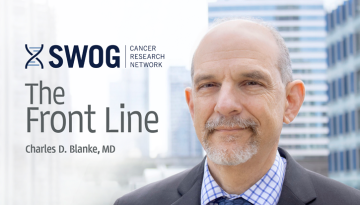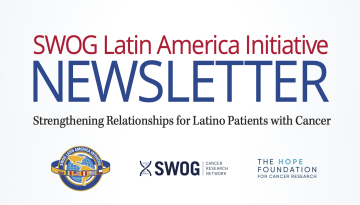Big Detection Bias in Prostate Biopsies
When it comes to prostate cancer biopsies, risk and reality don’t always match up, according to research published online today in the Journal of Clinical Oncology.
Investigators from SWOG, the cancer clinical trials network funded by the National Cancer Institute (NCI), found widespread detection bias after a fresh examination of data from the two largest prostate cancer prevention trials ever conducted in the United States. SWOG Biostatistician Catherine Tangen, Dr.P.H., of the Fred Hutchinson Cancer Research Center and her team reviewed data from over 17,000 men, including more than 2,200 diagnosed with prostate cancer over the course of the two landmark trials. The subject of an upcoming Nov. 7 JCO editorial, the research is the first systematic review of bias in prostate cancer biopsy patterns. The results surprised Tangen.
“We assumed that prostate cancers are diagnosed uniformly, but that’s not true,” said Tangen, the lead author of the JCO article. “We found a lot of variation in who got a biopsy. Risk and reality often didn’t line up. As a public health researcher, this concerns me. Bias can warp our understanding of the prostate cancer disease process – and misdirect our efforts to test new risk factors and prevention strategies in future research.”
Tangen and her team arrived at their findings by examining data from the placebo arms of two major SWOG prevention trials. One is the Prostate Cancer Prevention Trial (PCPT), which had the unique design feature of an end-of-study biopsy for all men – regardless of the results of their annual prostate-specific antigen (PSA) level test. This uniform biopsy provided unbiased data on cancer risk and could be considered the gold standard. The other trial was the Selenium and Vitamin E Chemoprevention Trial (SELECT). In SELECT, men received PSA testing and a digital rectal exam – and any ensuing biopsy recommendations – at the discretion of their doctor and based on their own preferences. These results reflect practices found in the general population.
The SWOG team found that younger, healthier, better educated men, those with a family history of prostate cancer, and those who were married were more likely to undergo a prostate biopsy even after accounting for their PSA level. The investigators then evaluated the associations of risk factors with prostate cancer in SELECT (reflecting treatment of the general population) and then in PCPT (the gold standard) and checked to see if results were consistent.
They found some major discrepancies. For example, men who took statin drugs on SELECT had a significantly reduced risk of prostate cancer, but in PCPT there was no association. They concluded that biases in who underwent prostate biopsy probably accounted for these very different results. On the flip side, researchers confirmed that men with a family history of prostate cancer and men with elevated PSA levels – both proven risk factors – did indeed develop cancer at higher rates than their peers. However, that association wasn’t as strong in PCPT when biopsy bias was reduced.
“The research community sometimes makes faulty conclusions about prostate cancer risk – assumptions that may lead to flawed screening decisions and incorrect choices about research directions,” Tangen said. “Detection bias is introduced when screening information is not acted upon uniformly. That is a reasonable strategy for a doctor who is assessing an individual’s risk profile and preferences. However, at the population level it can lead us to screen and biopsy men who are at low risk, and lead us to fail to screen and biopsy men who are at higher risk. In research, bias can cause us to waste precious time and money investigating the wrong risk factors. One wrong assumption can have a huge domino effect.”
JCO article co-author Dr. Ian Thompson of The University of Texas Health Science Center at San Antonio is a urologic oncologist and long-time SWOG member who served as principal investigator on the PCPT trial and who was a leader in SELECT. Thompson said the new findings have big implications for cancer care and research.
“In medicine, we don’t want to do the wrong thing and in research, we don’t want to look in the wrong places,” Thompson said. “Our work shows we may be doing both in prostate cancer. As there are similar issues in other cancers such as breast and thyroid, this issue may occur for these tumors as well. So the message is this: Risk factors for cancer are very complex. Before we all leap to conclusions, we need to collect very detailed research data on who is screened and why and be very rigorous in our analysis of that data and what it might mean for clinical care.”
Tangen agreed: “In cancer research, we all want the truth. But we’ve found that we may just have to work harder to find it. There is a lot of noise out there.”
The NCI provided primary grant funding for the research through grants UM1 CA182883, P30 CA065174, U01 CA086402, and U10-CA37429.
A team of SWOG researchers contributed to the study. Along with Tangen and Thompson, they include: Phyllis J. Goodman, M.S., Cathee Till, M.S., and Jeanette M. Schenk, Ph.D., of the Fred Hutchinson Cancer Research Center, which serves as the statistical home for SWOG. Pathologist M. Scott Lucia, M.D. of the University of Colorado School of Medicine rounded out the study team.
Other Recent Stories



